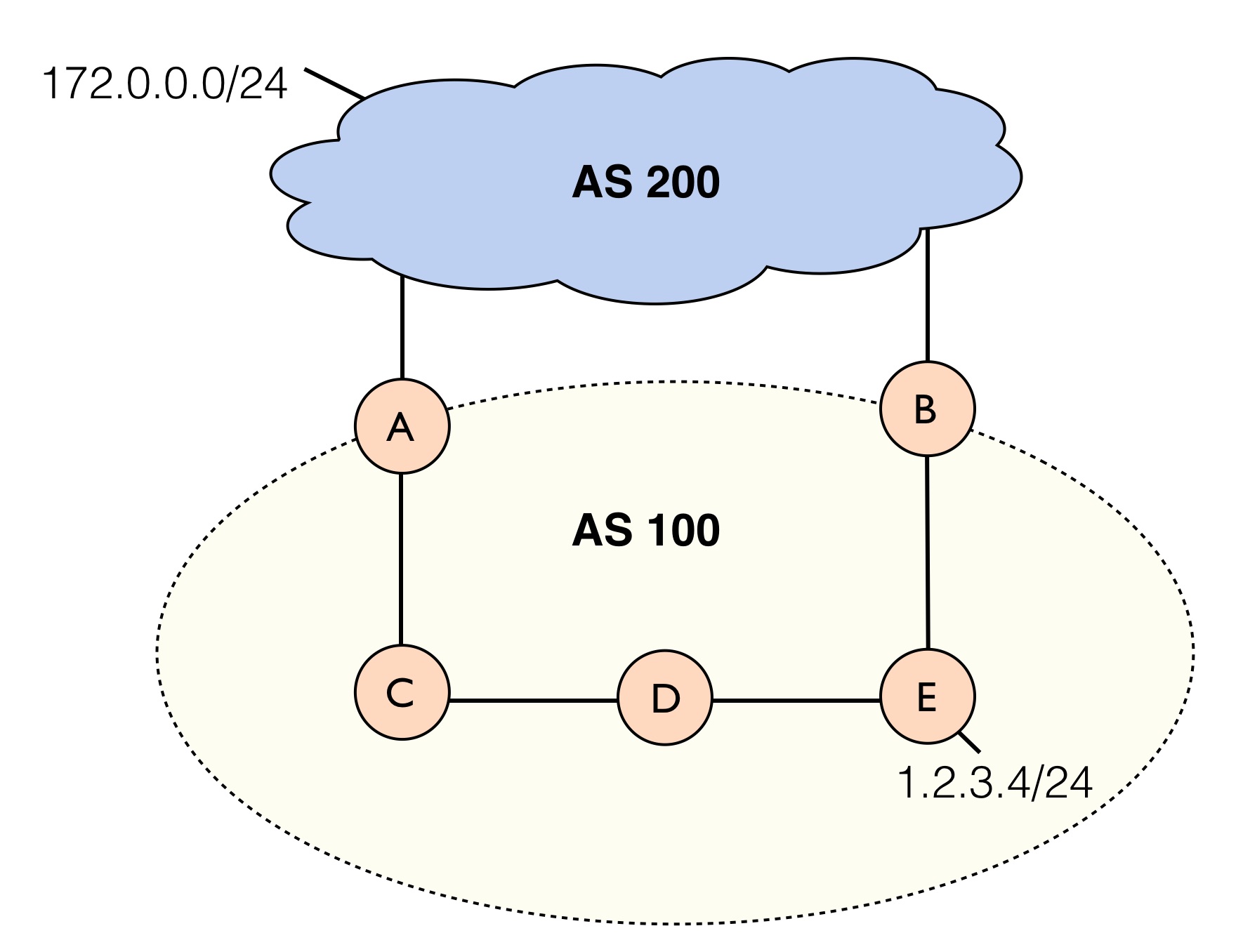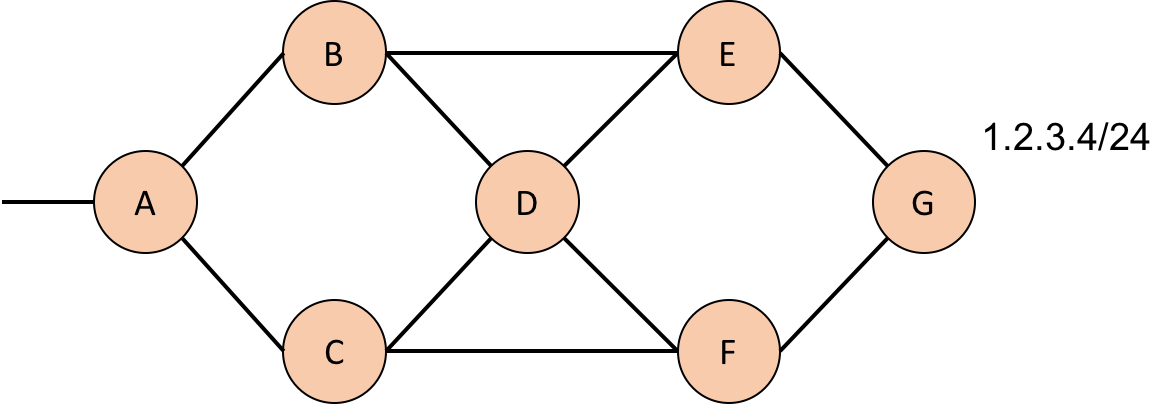1) Example Implementation
Consider the topology shown below:

Here we are configuring the routing policy for AS 100. Our network connects to peer AS 200 at both router A and router B. We have subnet 1.2.3.4/24 located at router E, and our peer owns the prefix subnet 172.0.0.0/24. For this example, assume that A and B are located on different ends of the country (e.g., west coast for A and east coast for B).
Hot Potato Routing
Under normal circumstances, the network will perform what is known as hot potato routing. This means that each network will try to hand off the traffic to the other network as quickly as possible. For example, to send traffic for 172.0.0.1, by default router E will send traffic along the shortest path to neighbor AS 200 on the east coast (router B). AS 200 will then bear the burden of carrying the traffic across the country. Similary, to send traffic to 1.2.3.4, AS 200 might hand the traffic off to AS 100 at router A. AS 100 will then have to carry the traffic across the country to E.
Cold Potato Routing
Suppose now that AS 200 has a slower network, and we want to improve Quality of Service for our customers. We might implement what is known as cold potato routing. We wish to keep the traffic under the control of our network for as long as possible. In particular, for prefix 172.0.0.0/24, we wish to carry the traffic through our network to the closest exit point (router A) to the destination.
However, in doing so, we might now create asymmetric paths. The return traffic to router E will still go through AS 200's network. As a result, we would also like traffic for router E to return from the closest entry point into the network.
Implementation
Write a Propane policy that implements cold potato routing for this toy example. The policy should do the following:
- Prefer to carry traffic for addresses in the subnet
172.0.0.0/24through the network to AS 200 via router A - Prefer to carry return traffic for addresses in the subnet
1.2.3.4/24through router A as well - Allow going through B as a backup in case of failures
Question: What BGP mechanism(s) does Propane use to implement each of the constraints (1-3) for your policy?
2) BGP Expressiveness
Consider the topology shown below.

A) Suppose we want all traffic from A to 1.2.3.4/24 (at G) to prefer “top” paths that avoid nodes C and F over “bottom” paths that avoid nodes B and E. Can the Propane language express this policy? If so, give the policy & topology. If not, explain why this policy gets rejected by the Propane compiler.
B) What happens if we change our specification such that we want all traffic from A to 1.2.3.4/24 to prefer “top” paths that avoid nodes C and F over any other arbitrary path. Can the Propane language express this policy? If so, give the policy & topology. If not, explain why this policy gets rejected by the Propane compiler.
C) If you (correctly) found that only one of the above policies is expressible in Propane, explain why the seemingly minor change allows the expressible policy to work where the non-expressible policy doesn’t.
Note: The compiler error messages are helpful and should inform your explanations, but don’t just copy them.
What to Turn In
Submit a compressed zip file containing the following for the assignment:
- The topology (.xml) and Propane policy (.pro) files used for the cold potato routing example.
- In a separate answers.txt file, answer the question about what BGP mechanism(s) Propane uses for the cold potato routing example.
- The topology (.xml) and Propane policy (.pro) files for the expressible policy from the BGP expressiveness question.
- In the same answers.txt file, provide your explanations from the BGP expressiveness question.